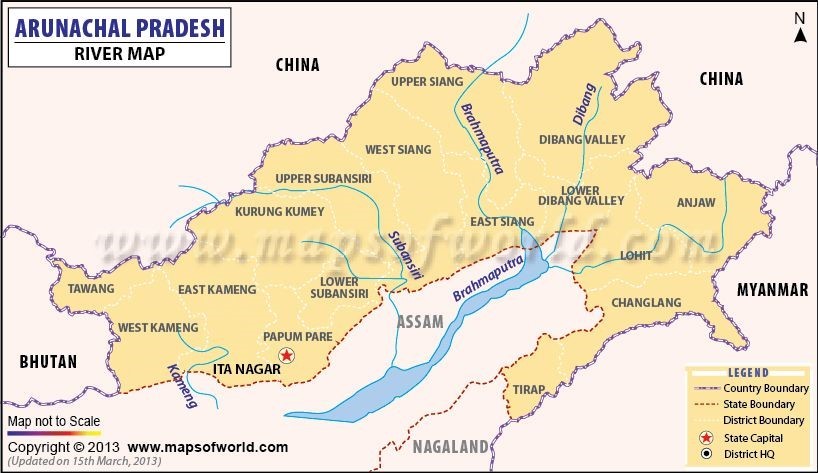Description

Disclaimer: Copyright infringement not intended.
Context
- A massive landslide at NHPC's much-delayed 2,000 MW Subansiri hydro project along the Assam-Arunachal Pradesh border on Friday completely blocked the only functional diversion tunnel, thereby significantly obstructing water flow through the river.
About
- It is the largest hydroelectric project ever constructed in India.
- It is a run-of-river system on the Subansiri River.
- The project is located near North Lakhimpur on the Arunachal Pradesh-Assam border.
- Capacity: 2000 MW
- It will produce up to 7.4 billion kWh of electricity per year.
- The project includes the construction of a surface powerhouse and a 116m-high concrete gravity dam from the river bed level.
- The dam will be 284 meters long.
- The dam is in Assam's Dhemaji district, but the powerhouse is in Arunachal Pradesh's Subansiri district.
- The National Hydro Power Corporation (NHPC) is in charge of its development.

About the Subansiri Lower Hydroelectric Project (SLHEP):
- SLHEP is a gravity dam under construction (almost 90% of the work has been finished) with a capacity of 2000 MW (8x250 MW).
- It is India's largest hydroelectric project to date, and it is a run-of-river scheme on the Subansiri River.
- A run-of-river dam is one where the flow of water downstream of the dam equals the flow of water upstream of the dam.
- In other words, the dam does not hold/store water behind it; rather, it flows with the river.
- National Hydroelectric Power Corporation (NHPC) Limited is in charge of the SLHEP's construction.
Subansiri River
- The Subansiri River, sometimes known as the "Gold River," is the greatest tributary of the Upper Brahmaputra River.
- It originates in the Tibetan Himalayas and flows into India via Arunachal Pradesh (Miri Hills).
- It runs from the Himalayan Mountains to the east and south-east of Arunachal Pradesh before reaching the Assam Valley.
- Finally, it meets the Brahmaputra River in the Assam district of Lakhimpur.
- It meets the Brahmaputra in the mysterious confluence of Majuli Island, the world's largest populated river island.
Controversy regarding SLHEP
- The project has been stalled due to local agitation over several dam safety and administrative issues involved in its implementation, such as:
- SLHEP violates the 1980 Brahmaputra Board Act by transferring the work of the Subansiri Basin Water Resources Department from the Brahmaputra Board to the public and private sectors.
- There is also the question of rising seismic threat levels to the dam, according to IIT-Roorkee.
Other Contentious Dams
The Sardar Sarovar:
- The Sardar Sarovar Dam is a gravity dam on the Narmada River near Navagam, Gujarat.
- It is the world's second-largest concrete gravity dam by volume.
- The dam provides water and electricity to Gujarat, Madhya Pradesh, Maharashtra, and Rajasthan.
- The dam is said to have displaced over 2.5 lakh locals.
Mulla Periyar Dam:
- This gravity dam on the Periyar River in Kerala's Idukki district is owned and administered by the Tamil Nadu government.
- The height of the dam is a point of disagreement between the governments of Kerala and Tamil Nadu.
Polavaram project:
- It is a multi-purpose national project under construction on the Godavari River in Andhra Pradesh's West Godavari and East Godavari districts.
- Villages in Chhattisgarh and Odisha will be submerged as part of the project.

Kishanganga Hydroelectric Plant
- It is a run-of-the-river hydroelectric system in Jammu and Kashmir that is designed to move water from the Kishanganga River to a power plant in the Jhelum River basin.
- The World Bank's Court of Arbitration was unable to settle the dispute between India and Pakistan over the Indus water treaty.
|
PRACTICE QUESTION
Discuss the environmental, social, and economic implications of large dam projects in India, taking a specific case study as an example. (250 words)
|











